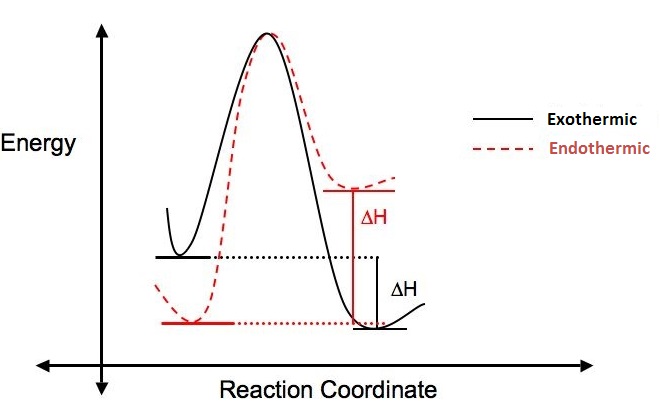
Energetics : Halogenation Reaction
 المؤلف:
..................
المؤلف:
..................
 المصدر:
LibreTexts Project
المصدر:
LibreTexts Project
 الجزء والصفحة:
.................
الجزء والصفحة:
.................
 24-7-2019
24-7-2019
 1526
1526
Energetics : Halogenation Reaction
Why does this reaction occur? Is the reaction favorable? A way to answer these questions is to look at the change in enthalpy (ΔH) that occurs when the reaction takes place.
ΔH = (Energy put into reaction) – (Energy given off from reaction)
If more energy is put into a reaction than is given off, the ΔH is positive, the reaction is endothermic and not energetically favorable. If more energy is given off in the reaction than was put in, the ΔH is negative, the reaction is said to be exothermic and is considered favorable. The figure below illustrates the difference between endothermic and exothermic reactions.

ΔH can also be calculated using bond dissociation energies (ΔH°):
ΔH=∑ΔH∘ of bonds broken−∑ΔH∘ of bonds formed
Let’s look at our specific example of the chlorination of methane to determine if it is endothermic or exothermic:
.jpg?revision=2)
Since, the ΔH for the chlorination of methane is negative, the reaction is exothermic. Energetically this reaction is favorable. In order to better understand this reaction we need to look at the mechanism.
 الاكثر قراءة في مواضيع عامة في الكيمياء العضوية
الاكثر قراءة في مواضيع عامة في الكيمياء العضوية
 اخر الاخبار
اخر الاخبار
اخبار العتبة العباسية المقدسة


